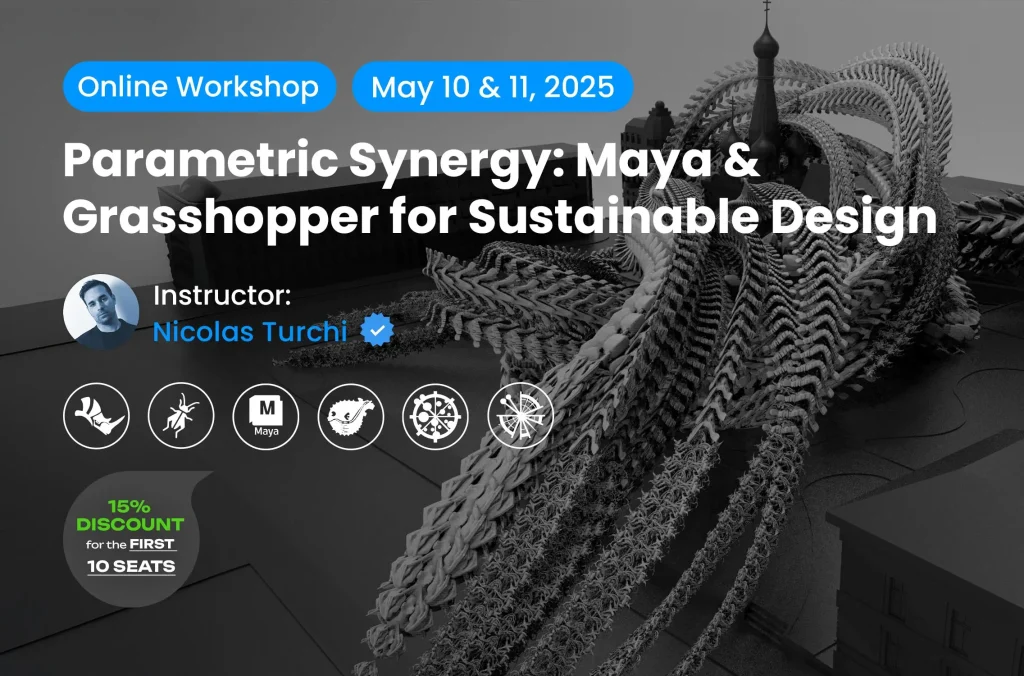Theme: Parametric synergy: Maya & Grasshopper for sustainable design
Date: 10. – May 11, 2025
Time: 14:00 – 6:00 p.m. GMT
Format: Online on zoom
Duration: 2 sessions (8 hours)
Registration period: May 9, 2025
Total seats: 50 seats
Difficulty: Beginner intermediate
Language: English
Certificate: Yes
General registration: 100 EUR
First 10 seats: 85 EUR
Teach free: With full access membership
Fee for digital members: 70 EUR (15% discount only available for digital members)
Organized by: Paacademy
Tutor: Nicolas Turchi, Ali al-Siwife
Recordings: An indefinite period will be available for all participants on records.
Introduction to parametric synergy:
Use of Maya's organic modeling functions in addition to the procedural analysis of grasshoppers. This workshop enables the students to improve their design workflow. In Maya, the participants create a parametric tower that releases the power of organic modeling and then validate and optimized their design with grass shopper.
This workshop focuses on parametric and polygonal free-form modeling techniques in Autodesk Maya. A case study modeled in Maya is exported according to Rhino. Hourish lane is used to process the design procedurally based on environmental considerations such as sunlight, wind and visibility. In addition, Galapagos makes generative design optimization easier with a valuation -based evaluation system for analysis.
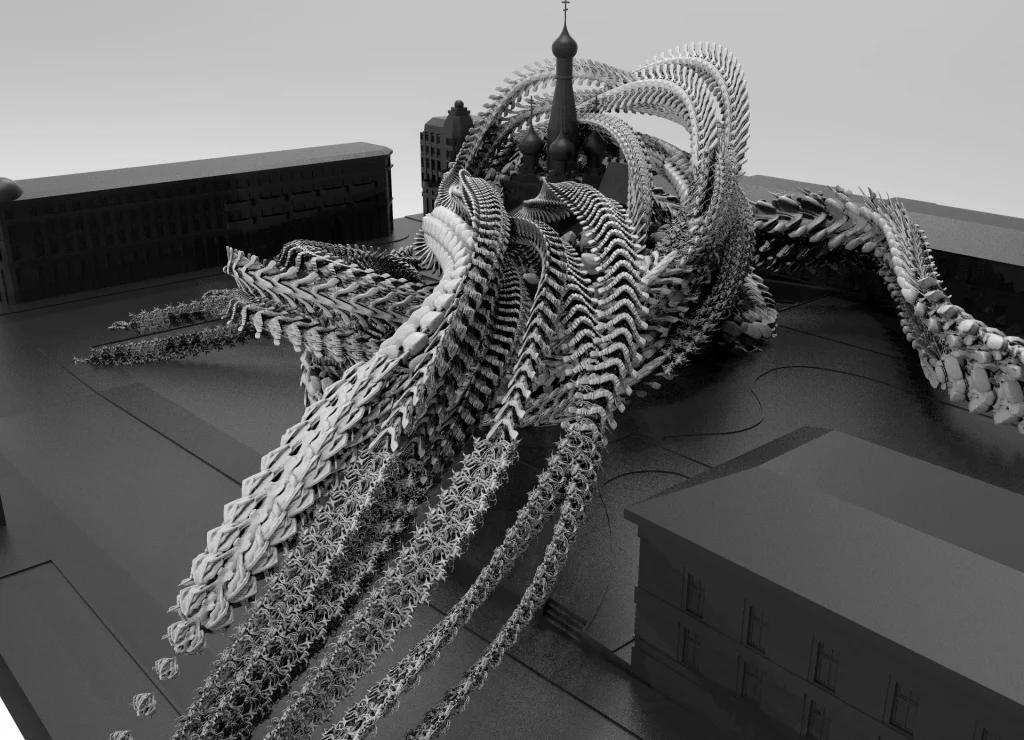

The scope of parametric synergy:
This workshop is intended to convey a detailed understanding of organic modeling using Autodesk Maya and address the complexity that designers often challenge the creation of complicated forms. The participants gain practical experience in developing unique designs by mastering both basic and advanced modeling techniques.
The workshop recognizes the increasing importance of sustainability in contemporary architecture and emphasizes the integration of environmental analysis in the design process. Students will acquire important skills to evaluate and improve the environmental output of their projects and to ensure that they meet current and future sustainability standards.
When you work individually, the students start to design and model their designs in Maya and to focus on an organic and parametric design proposal. You will then export your models for geometric optimization to Rhino and prepare the designs for a comprehensive analysis. Using grasshoppers, the participants will carry out environmental ratings based on predefined parameters, in which plugins such as Ladybug are used for solar analysis, butterfly for wind simulations and galapagos to optimize visibility and other performance criteria.
In the entire workshop, a combination of demonstrations and practical exercises makes learning easier. Trainers give feedback and lead the students through the iterative process of design, analysis and optimization.
At the end of the workshop, the participants will have developed a robust workflow in which organic modeling is seamlessly integrated into the procedural analysis and equip them with the tools to create innovative and sustainable architectural designs.
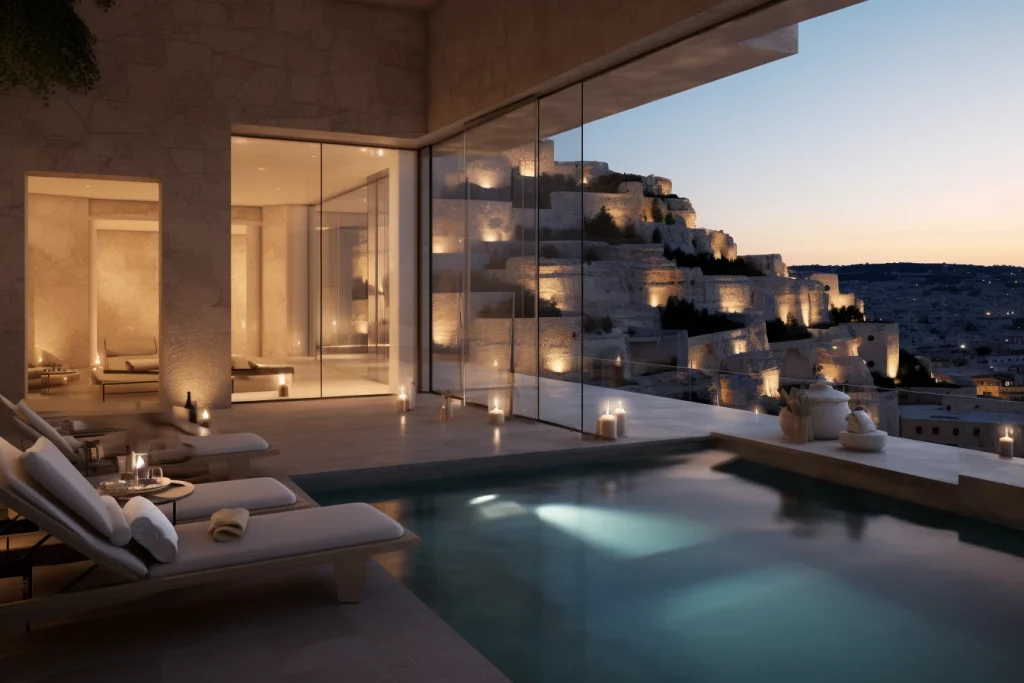
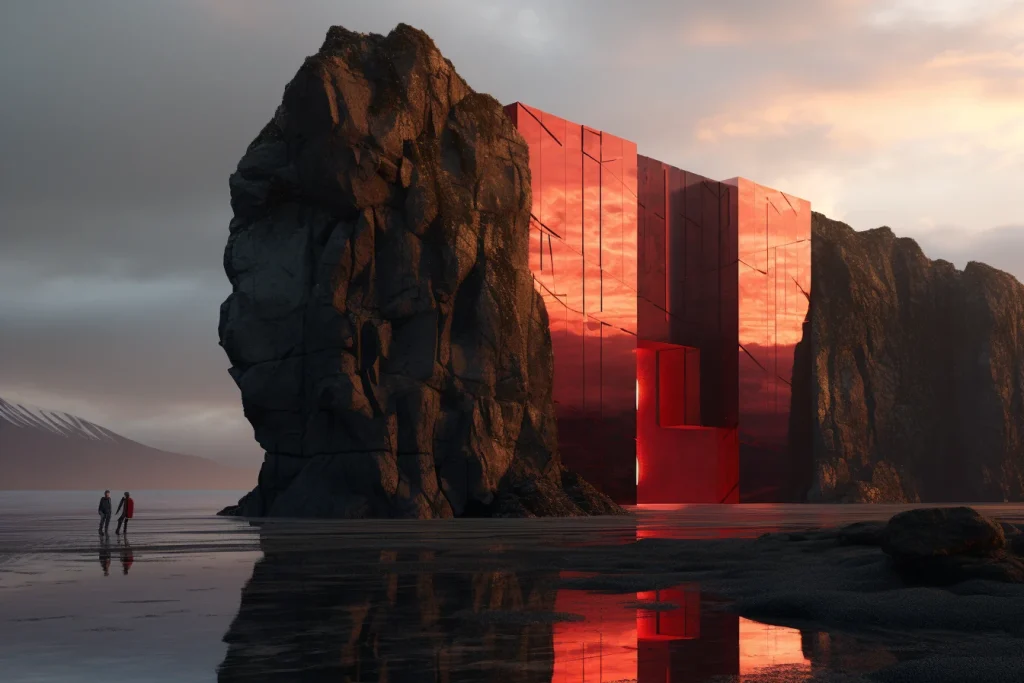
Important learning issues:
- 3D modeling in Maya: Master Organic parametric modeling techniques.
- Basic and advanced techniques: Develop a solid basis and explore advanced design strategies in Maya.
- Thinking design: cultivate a deeper understanding of form -finding methods.
- Maya-to-grasshopper workflow: Learn to change designs effectively from Maya to Rhino and then to Grasshoppers.
- Housing frame foundal data: acquire essential skills when using grasshoppers.
- Environmental analysis: Use tools like Ladybug for sun analysis, butterfly for wind analysis and galapagos to optimize visibility.
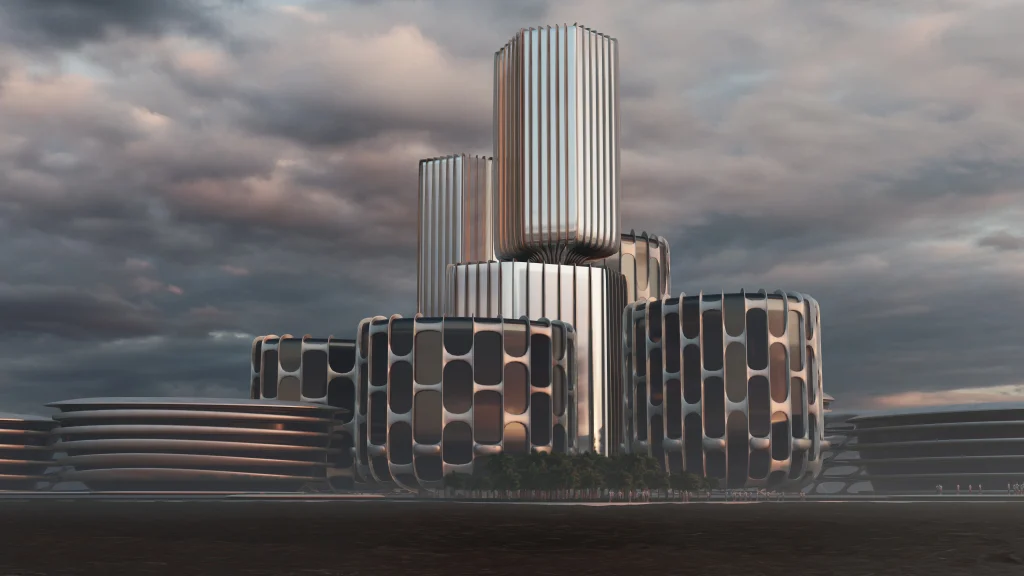
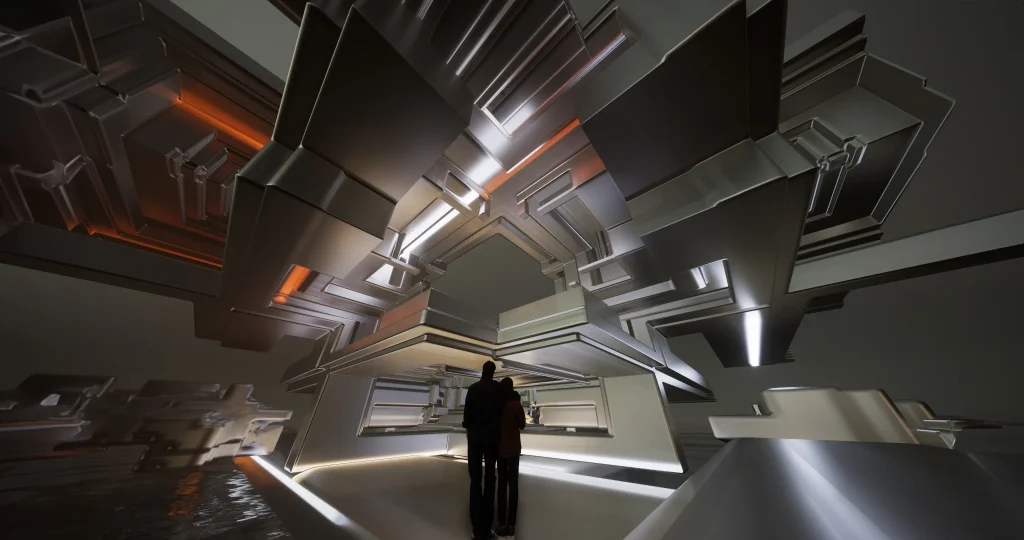
Program:
Day 1:
- Introduction to polygonal modeling
- Extended procedural modeling techniques
- Research into Maya's organic modeling functions
- Practical design development
Day 2
- Housing grasshopper for the integration of environmental design
- Advanced Sunday, wind and visibility simulations
- Use of ladybugs, butterfly and Galapagos plugins
- Generative design optimization for sustainability
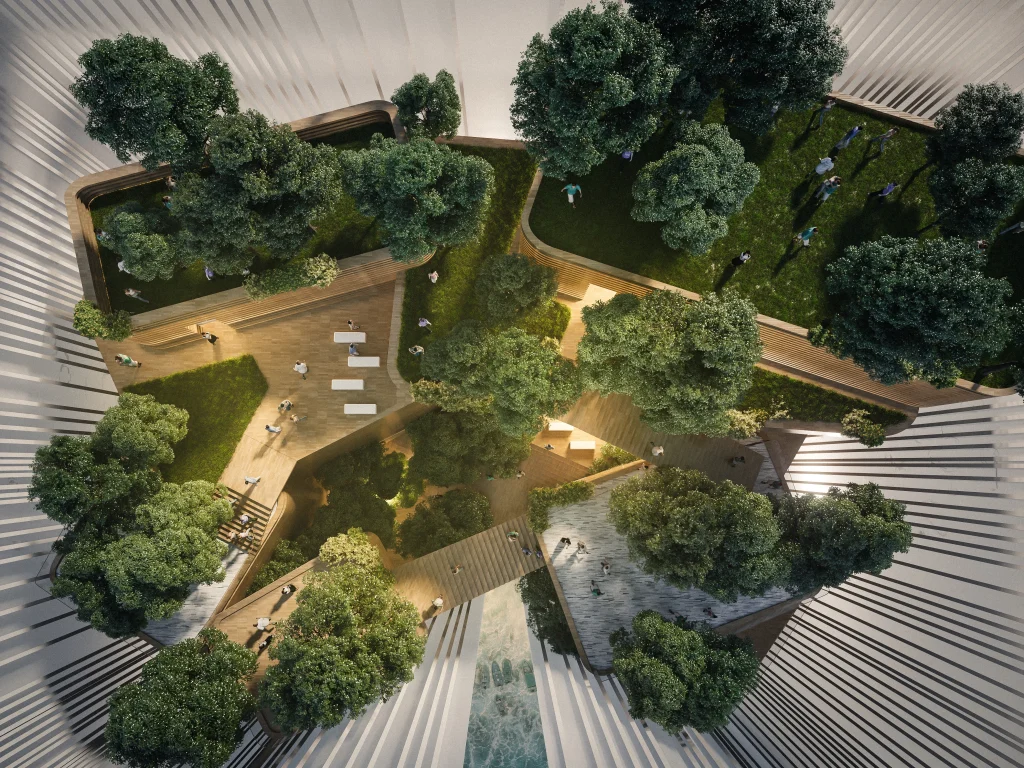

Software &
Workshop notes:
- Please make sure that all software is installed before starting the workshop. Software installation is NOT Part of the workshop.
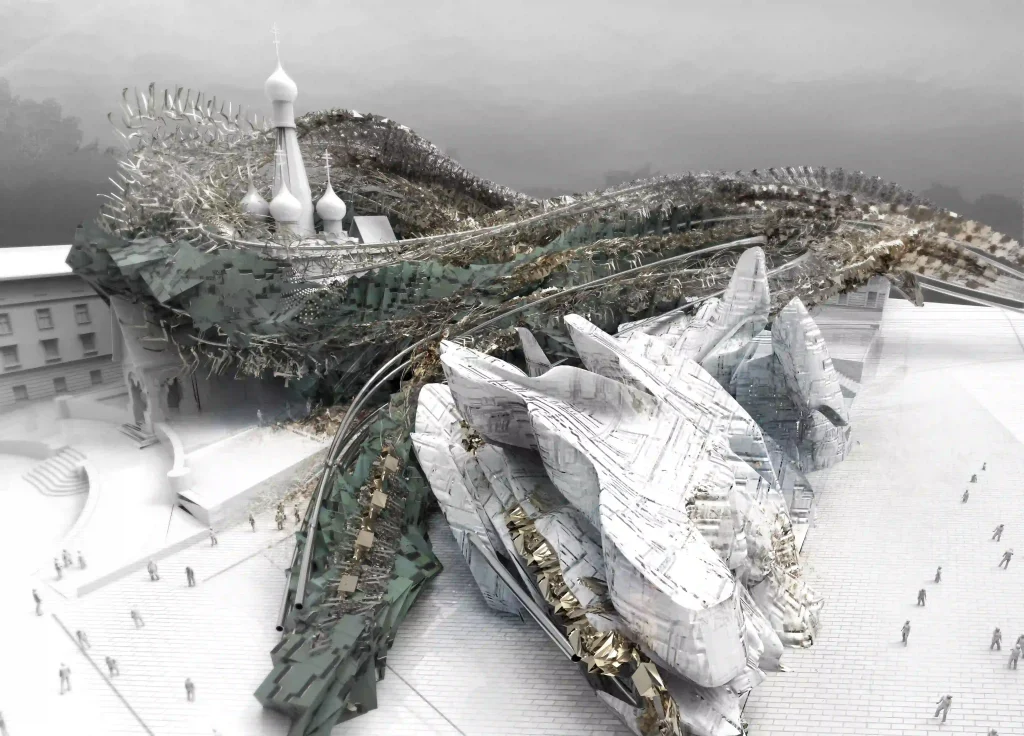
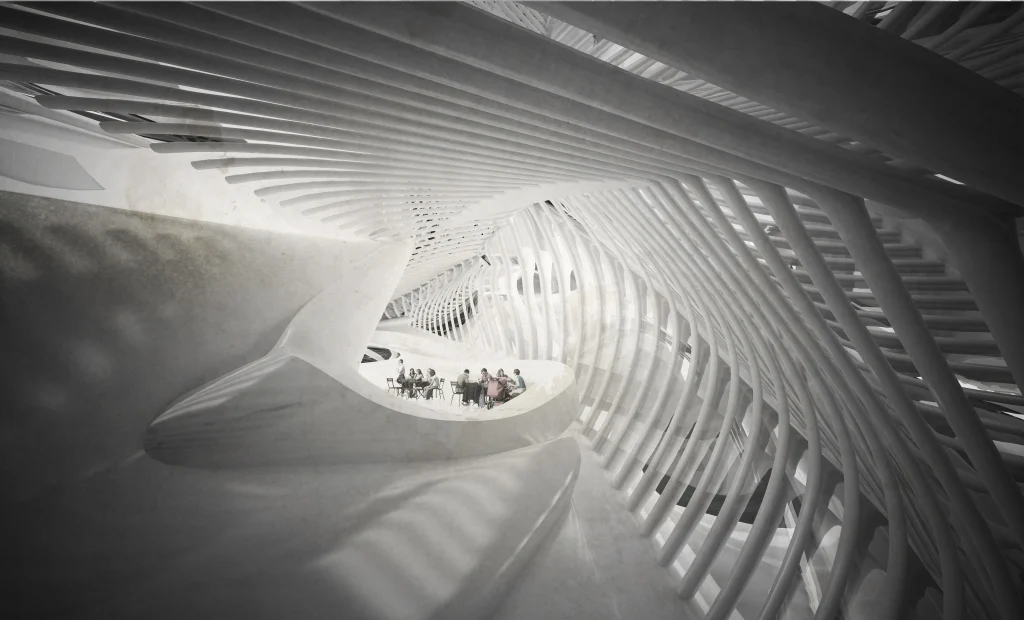
Teacher:
Nicolas Turkish

Nicolas Turkish is director of the International Riba Chartered Architecture Studio NT-AR and an Arb and Riba-accredited architect in the United Kingdom. He is a professor at the American University in Dubai and extraordinary professor at the University of Bologna with previous academic experience at the Manchester School of Architecture, Harvard University, the P Voldnico di Milano and Birmingham City University.
Nicolas has a Master in Architecture II from Harvard University and a five-year Bachelor and Master degree in architecture from the University of Bologna, where he received the prestigious Giacomo Venturi Award for the best thesis. Before founding NT-AR with offices in Great Britain and Dubai, he worked for renowned international studios, including Zaha Hadid Architects, Peter Eisenman Architects, Hernan Diaz Alonso Architects, Mario Cucinella Architects and 5+1AA.
Turchi is particularly passionate about aspiring technologies and its effects on architecture theory. His interdisciplinary research examines the relationship between architecture, philosophy and physics with numerous publications for the introduction of the fourth dimension in architecture (“Spaetime Architecture”). His work was widely published and exhibited on leading platforms and at important international events, including the Venice Biennale, the Milan Design Week, Archdaily and the Theater of Digital Art (Toda) in Dubai.
Ali al-Siwife

Ali al-Siwife is an architectural designer with a passion for computer design. As a senior designer at NT_AR, he integrates computer design and analysis into a number of innovative projects. A student from the CPU[Ai] Atelier at MSA is enriched by knowledge by leading researchers in arithmetic thinking.
Important comments:
- The studio workshop “Parametric synergy: Maya & Grasshopper for Sustainable Design” from Paacademy will start 14:00 (GMT) on Saturday, May 10, 2025.
- Total sessions: 2 sessions
- The lesson per session will be 4 hours.
- The students have time for a break between the lessons.
- Every session and the entire studio are recorded, and videos will only be available for the participants one day after the class for unlimited time.
- Paacademy will present an attendance certificate.
- The studio has limited seats. Tickets are not transferable and not reimbursable. Please read carefully before registering.
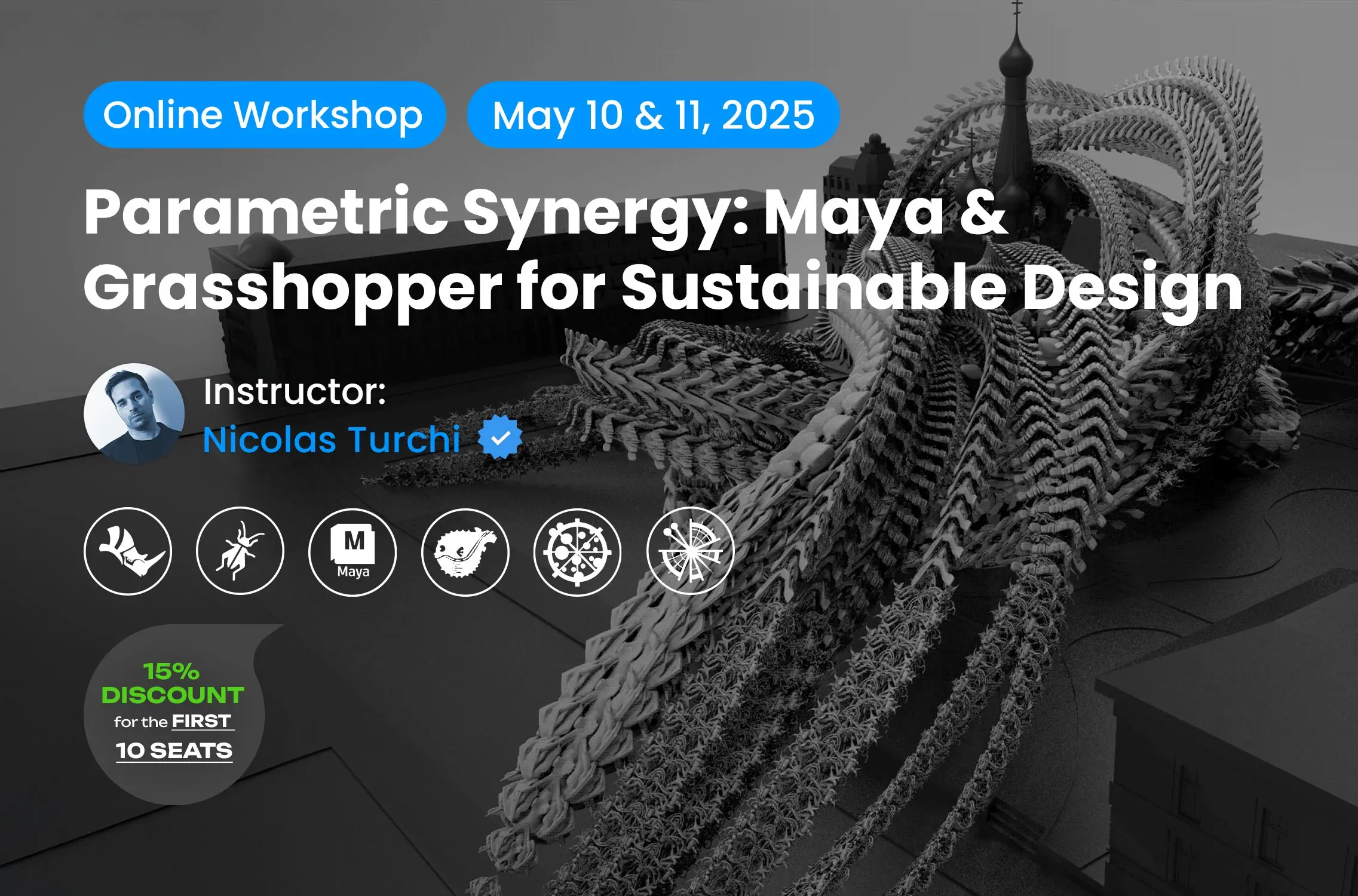
Theme: Parametric synergy: Maya & Grasshopper for sustainable design
Date: 10. – May 11, 2025
Time: 14:00 – 6:00 p.m. GMT
Format: Online on zoom
Duration: 2 sessions (8 hours)
Registration period: May 9, 2025
Total seats: 50 seats
Difficulty: Beginner intermediate
Language: English
Certificate: Yes
General registration: 100 EUR
First 10 seats: 85 EUR
Teach free: With full access membership
Fee for digital members: 70 EUR (15% discount only available for digital members)
Organized by: Paacademy
Tutor: Nicolas Turchi, Ali al-Siwife
Recordings: An indefinite period will be available for all participants on records.
